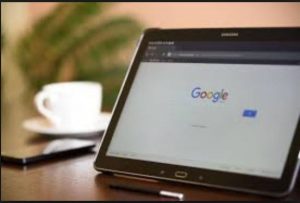![Business Acronym RFP as Request For Proposal. © [stanciuc] / Adobe Stock](https://drdean.edublogs.org/files/2017/09/Request-for-Proposal-2i7y9ot-swie9b-300x200.jpg)
Business Acronym RFP as Request For Proposal. © [stanciuc] / Adobe Stock
According to Johnson-Sheehan, hard benefits are quantifiable outcomes (deliverables and results), soft benefits are intangible advantages of working with an organization (service, quality, and satisfaction), and value benefits are common values held by you and the organization (pp. 128-130).
When I think of hard benefits, I often think of organizational hard data. For example, hard benefits/data are often preferred with management because of their precision. Swanson (2001) asserted that hard data tends to have these features:
- Easy to measure, quantitative
- Relatively easy to assign dollar values to
- Based on objective criteria
- Often already being used as measures of organizational performance
- Credible in the eyes of management. (pp. 27-28)
Swanson added that soft data, on the other hand, has these characteristics:
- Difficult to measure or quantify directly
- Difficult to assign dollar values to
- Based on subjective criteria
- Less credible as performance measures than hard data
- Usually behaviorally oriented. (p. 27)
One might conclude that hard benefits/data are better in some way. But I tend to disagree. Soft data reveal useful information that should be carefully considered in weighing decisions and should not be underestimated in their organizational impact.
Historically, some organizational leaders have underestimated the importance of soft- and value-based benefits. In fact, I believe some soft benefits actually can be tied to hard measures, such as high-quality work that leads to cost savings. In that vein, soft data can often explain hard data. So, it is reassuring that many proposal/grant writers understand the need to stress all three benefits. They give us a fuller picture of the organization, its human resources, and its culture (observable artifacts, basic assumptions, and espoused values).
Like many people, I have strong core values or enduring personal beliefs and preferences. Formed early in life, our values have an influence on our behavior (Reece & Brandt, 1999). Sometimes our values are shared at our workplace; sometimes they are not. For example, loyalty is a personal and organizational value for some.
In my leadership experience, I would argue that employee loyalty (a value) can actually impact the bottom line (hard data) in a positive way. Thus, the outcome is likely to show increased productivity and increased profits. So, if the organization you are introducing your proposal to values loyalty above all else, it is wise to emphasize that your institution also highly values that quality in the proposal’s qualifications section and in the conclusion. By doing so, it might make all the difference in winning over a new client.
In summary, as you highlight the innovative features of your proposal, be sure to incorporate the hard, soft, and value benefits of your plan. As you can see, they are valuable in selling your grant or proposal.
References
Johnson-Sheehan, R. (2008). Writing Proposals. (2nd ed.). New York: Pearson Education, Inc.
Reece, B., & Brandt, R. (1999). Effective human relations in in organizations. (7th ed.). Boston, MA: Houghton Mifflin Company.
Swanson, R. (2001). Assessing the financial benefits of human resources development. Cambridge, MA: Perseus Publishing.
![Learning Management System in the form of binary code, 3D illustration. © [profit_image] / Adobe Stock](https://drdean.edublogs.org/files/2017/09/LMS-11j0xbp-zdojm5-300x200.jpg)
![Words Have Power concept. © [tumsasedgars] / Adobe Stock](https://drdean.edublogs.org/files/2017/09/Words-have-Power-w99nf4-16um1d5-300x222.jpg)
